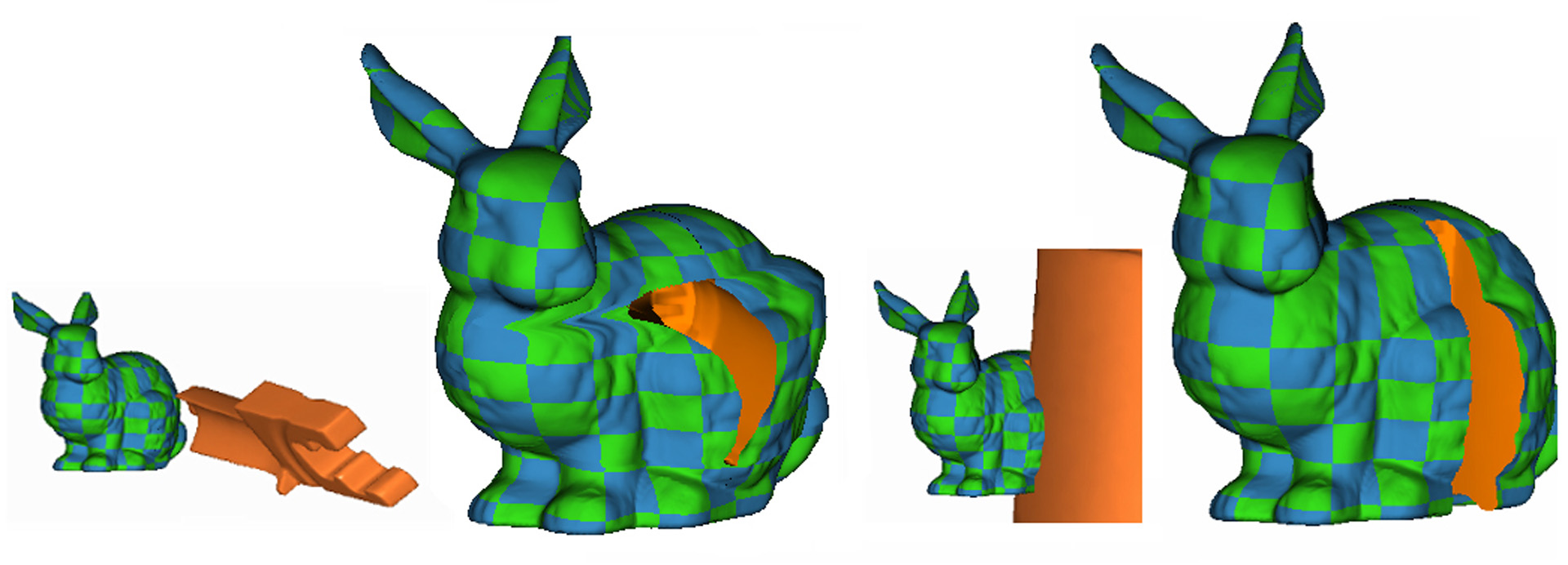“Visualizing collision effects between penetrating and non-penetrating objects” by Correa and Silver
Conference:
Type(s):
Title:
- Visualizing collision effects between penetrating and non-penetrating objects
Presenter(s)/Author(s):
Abstract:
We present a novel method for visualizing collisions effects between penetrating or non-penetrating objects. The interaction of 3D objects has been traditionally divided into two stages: the detection of a collision, and the response or effects after the collision. In this work, we concern ourselves with the latter. The rendering of collision effects is useful for virtual sculpting, virtual reality, surgery simulation and games. The interaction between two colliding objects has been used for virtual sculpting, where one object (virtual “tool”), generates indentations in the other object (virtual “clay”). This has been implemented in real-time with the aid of a distance field representation of the virtual tool. One of the assumptions of virtual sculpting, reminiscent of real sculpting materials (e.g., clay), is that objects are non-penetrating. In this paper, we generalize the notion of collision effects by allowing penetrating “tools”, where the object is cut as the tool penetrates the object. The collision effect is such that the object is still deformed, but a break appears where the tool is. In this work, we use an implicit representation of the deformed object (virtual “clay”), as opposed to traditional mesh-based approaches. The ability to deform objects implicitly was exploited by our previous work [Correa et al. 2006a; Correa et al. 2006b], but they were concerned with simple primitive deformations such as twists or peels.
References:
1. Correa, C., and Silver, D. 2007. Programmable shaders for deformation rendering. In Eurographics/SIGGRAPH Workshop on Graphics Hardware.
2. Correa, C., Silver, D., and Chen, M. 2006. Feature aligned volume manipulation for illustration and visualization. IEEE Transactions on Visualization and Computer Graphics (Proceedings Visualization) 12, 5, sss-eee.
3. Correa, C. D., Silver, D., and Chen, M. 2006. Discontinuous displacement mapping for volume graphics. In Volume Graphics 2006, Eurographics Association, 9–16.
4. Gain, J., and Marais, P. 2005. Warp sculpting. IEEE Transactions on Visualization and Computer Graphics 11, 2, 217–227.




